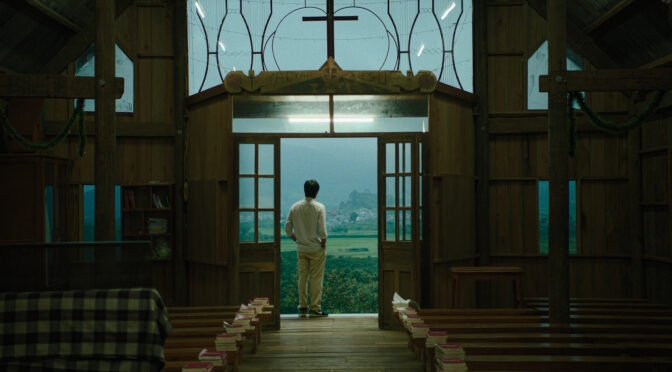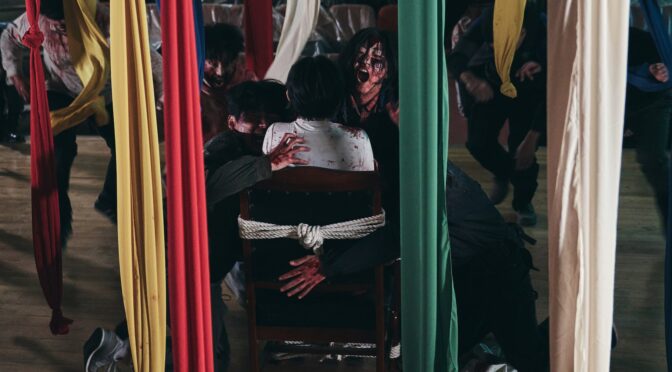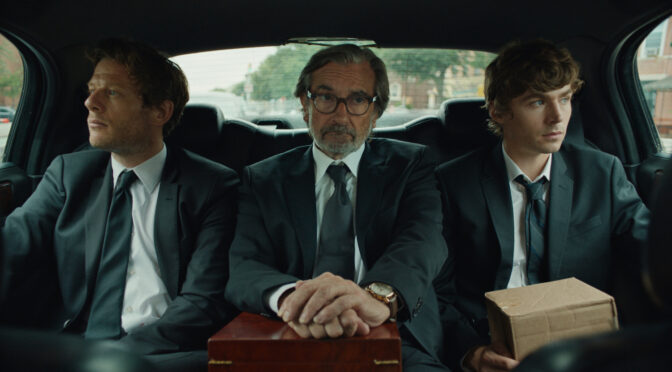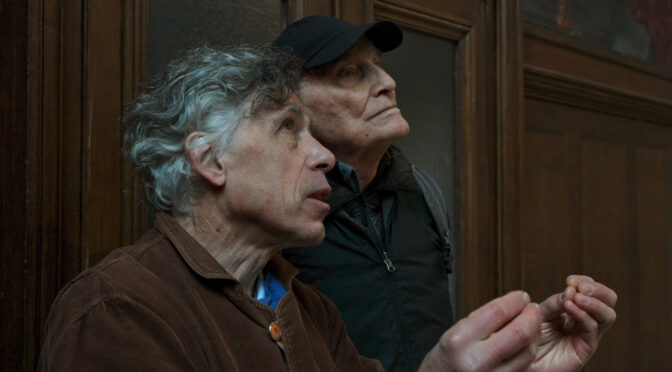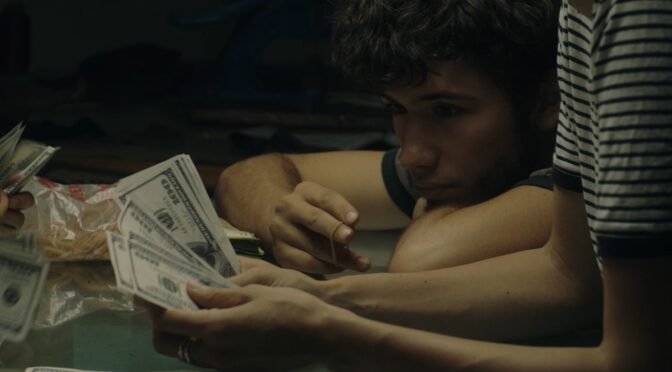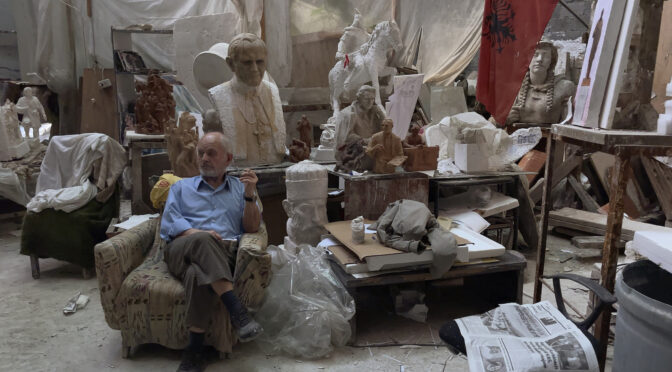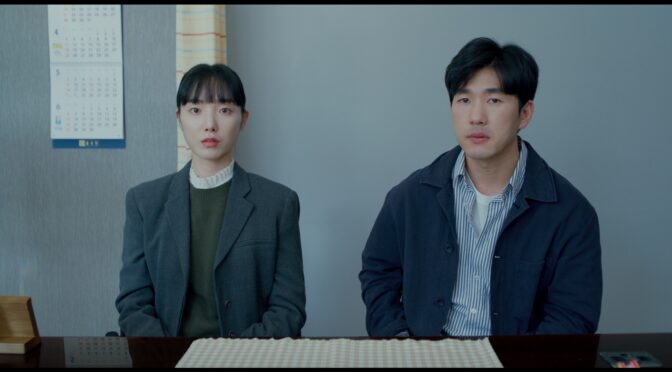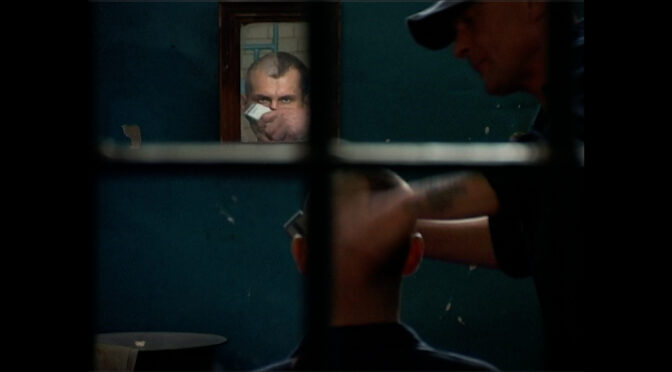Tracciare i confini di una mappa significa indagare il mondo conosciuto e, soprattutto, rivolgere il nostro sguardo verso l’ignoto. Ruotano intorno a questo le domande che Andrea Gatopoulos lascia che l’intelligenza artificiale ponga a David Rumsey, uno dei più grandi collezionisti di mappe del mondo. Il primo lungometraggio del regista abruzzese conclude una trilogia dedicata al rapporto tra uomo e macchina costituita dai due cortometraggi Happy New Year, Jim (2022) ed Eschaton Ad (2023).
Continua la lettura di “A STRANGER QUEST” DI ANDREA GATOPOULOSArchivi tag: torino film festival
“INSIDE THE YELLOW COCOON SHELL” DI THIEN AN PHAM
A Saigon, in un bar affollato per i mondiali di calcio di Russia 2018, tre ragazzi discutono sull’esistenza di Dio. Uno è ateo, un altro è convinto di poter trovare una sua testimonianza avvicinandosi alla natura e il terzo, Thien (Le Phong Vu), non riesce a trovare la fede nonostante lo desideri. Questa e tantissime altre “invocazioni” stabiliscono il vero obiettivo del viaggio che inizierà di lì a poco: il tentativo di trovare anche una piccolissima traccia immanente della grandezza del divino. Ciò che stupisce – ed è bene dirlo subito – è l’intuizione di Thien An Pham, qui al suo esordio, di non limitarsi ad assecondare l’indagine del suo protagonista ma di arricchire questo dialogo teologico con la sua personale osservazione effettuata tramite il mezzo cinematografico.
Continua la lettura di “INSIDE THE YELLOW COCOON SHELL” DI THIEN AN PHAM“MARIANNE” DI MICHAEL ROZEK
L’esordio alla regia di Michael Rozek è un racconto intimo e insieme universale. Un’architettura metacinematografica ardita ma coinvolgente che grazie alla presenza consapevole e fragile di Isabelle Huppert riesce a proporre una profonda riflessione sulla recitazione e sul cinema, sull’arte e sul tempo.
Continua la lettura di “MARIANNE” DI MICHAEL ROZEK“YANNICK” DI QUENTIN DUPIEUX
Una musica off dalla tonalità straordinariamente soave esce da un pianoforte sia all’inizio sia alla fine del film di Quentin Dupieux, in arte Mr. Oizo: è il sottofondo musicale ideale per accompagnare con grazia un’opera cinematografica meta-artistica da cui, seppur in maniera immancabilmente comica (come ormai ci ha abituato il gusto per l’assurdo e per il nonsense del regista), traspare un messaggio per e sull’arte che, lungi dall’essere fuori posto nella filmografia del regista, ben si amalgama alla denuncia della situazione ambientale di Fumer Fait Tousser (2022), al rapporto amicale di Mandibules – Due uomini e una mosca (2020) e all’estremo feticismo per le giacche scamosciate di Doppia pelle (2019).
Continua la lettura di “YANNICK” DI QUENTIN DUPIEUX“THE SIN” BY HAN DONG-SEOK
Article by Emidio Sciamanna
Translation by Francesca Borgheresi
Lurking in the shadows of a social pessimism and often embodied by the human values of science and justice, the search for rationality takes the ruthless and tragic shape of a great evil, which is a demon that feeds itself with collective discrimination and mutual hate. The second full-length film by Han Dong-seok, The Sin, presented in the category “Crazies” of the 41st edition of Torino Film Festival, suggests a crazy concept of the original sin, where fear and the obsessive desire of revenge insinuate in the mechanic physicality of multiple moving bodies.
Continua la lettura di “THE SIN” BY HAN DONG-SEOK“THE SIN” DI HAN DONG-SEOK
Celata nell’ombra del pessimismo sociale, la ricerca della razionalità, spesso incarnata dai valori umani della scienza e della giustizia, prende le forme spietate e drammatiche di un male superiore, un demone che si alimenta della discriminazione collettiva e dell’odio reciproco. È in questo modo che il secondo lungometraggio di Han Dong-seok, The Sin, presentato nella sezione Crazies del 41^ Torino Film Festival, propone una folle visione del peccato originale, in cui il sentimento di paura e l’ossessivo desiderio di vendetta si insinuano nella fisicità meccanica di molteplici corpi in movimento.
Continua la lettura di “THE SIN” DI HAN DONG-SEOK“EX-HUSBANDS” BY NOAH PRITZKER
Article by Pietro Torchia
Translation by Alessia Licari
In this edition of the Turin Film Festival, characterized by a surreal, sci-fi and horror atmosphere and a need to escape reality, “Ex-Husbands” – presented out of competition – is a film that instead focuses on the real world.
Continua la lettura di “EX-HUSBANDS” BY NOAH PRITZKER“EX-HUSBANDS” DI NOAH PRITZKER
In un’edizione del Torino Film Festival all’insegna di atmosfere surreali, fantascientifiche e horror, che condividono la ricerca di una fuga dalla realtà, Ex-Husbands – presentato fuori concorso – in quella realtà ci si rifugia.
Continua la lettura di “EX-HUSBANDS” DI NOAH PRITZKER“RICARDO ET LA PEINTURE” BY BARBET SCHROEDER
Article by Emidio Sciamanna
Translation by Chiara Rotondo
An elderly painter climbs the steep cliff face of Brittany’s coastline, wearing worn-out clothes and holding his palette, easel and brushes in hand. Upon reaching a secluded grotto, he is free to express his imagination against the stunning coastal backdrop. This is the opening scene of Barbet Schroeder’s latest documentary, Ricardo et la peinture (“Ricardo and painting”), which premiered Out of Competition at the 41st Turin Film Festival.
Continua la lettura di “RICARDO ET LA PEINTURE” BY BARBET SCHROEDER“RICARDO ET LA PEINTURE” DI BARBET SCHROEDER
Abiti consumati, pennelli in mano, tavolozza e cavalletto sulle spalle: nel cuore della Bretagna, sullo sfondo di un suggestivo paesaggio costiero, un anziano pittore si inerpica faticosamente lungo la ripida parete rocciosa di un litorale, fino a raggiungere una piccola grotta nascosta, dove può dare libero sfogo alla sua fantasia. È l’inizio del nuovo documentario di Barbet Schroeder, Ricardo et la peinture, presentato Fuori Concorso alla 41^ edizione del Torino Film Festival.
Continua la lettura di “RICARDO ET LA PEINTURE” DI BARBET SCHROEDER“SMILING GEORGIA” BY LUKA BERADZE
Article by Nicolò Pilon
Translation by Martina Agostino
During the elections in 2012 in Georgia, the Party’s candidate Mikheil Saak’ashvili of “United National Movement” promises free dental visits to all citizens over the age of 50. He does not limit himself to promises, in fact he hires teams of dentists tasked with restoring the smiles of his potential voters. At the end of the two-month campaign, however, Mikheil will lose the election, leaving citizens with half surgery done, but with no teeth. Eight years later, director Luka Beradze decides to go to one of the regions most affected by this electoral cataclysm, where he will find the Innominatovillage, in the municipality of Chiaturi.
Continua la lettura di “SMILING GEORGIA” BY LUKA BERADZE“SMILING GEORGIA” DI LUKA BERADZE
Durante le elezioni del 2012 in Georgia il candidato del partito “Movimento Nazionale Unito” Mikheil Saak’ashvili promette visite odontoiatriche gratuite a tutti i cittadini che hanno superato il cinquantesimo anno di età. Non si limita alle promesse, ma ingaggia squadre di dentisti incaricate di ripristinare il sorriso dei suoi potenziali elettori. Alla fine della campagna durata due mesi Mikheil perderà però le elezioni, lasciando i cittadini a metà intervento, ovvero senza denti. Otto anni dopo il regista Luka Beradze decide di andare in una delle regioni più colpite da questo cataclisma elettorale, dove troverà il villaggio Innominato, nel comune di Chiaturi.
Continua la lettura di “SMILING GEORGIA” DI LUKA BERADZE“CAMBIO CAMBIO” BY LAUTARO GARCÍA CANDELA
Article by Elena Bernardi
Translation by Camilla Lippi
In Cambio Cambio (“Change Change”), one of the movies presented out of competition in the “Nuovi Sguardi Argentini” (“New Argentinian Perspectives”) section at the 41st Torino Film Festival, Lautaro García Candela paints a picture of Generation Z in a post-pandemic Argentina, somewhere between a thriller and a love story.
Continua la lettura di “CAMBIO CAMBIO” BY LAUTARO GARCÍA CANDELA“CAMBIO CAMBIO” DI LAUTARO GARCÍA CANDELA
In Cambio Cambio, presentato fuori concorso nella sezione “nuovi sguardi argentini” alla 41^ edizione del Torino Film Festival, Lautaro García Candela dipinge un ritratto della generazione Z nell’Argentina post-pandemia, a metà tra il thriller e la storia d’amore.
Continua la lettura di “CAMBIO CAMBIO” DI LAUTARO GARCÍA CANDELA“ANULLOJE LIGJIN” BY FABRIZIO BELLOMO
Article by Asia Lupo
Translation by Rebecca Lorusso
The sea, a mound of earth and some buildings are the opening images of Anulloje Ligjin, a documentary that talks about the mysterious reality of a country which has been isolated from the rest of the European continent for 40 years. Albania, in this film, is shown in all its desolation and inconsistencies, but also in its profound creative energy and resistance.
Continua la lettura di “ANULLOJE LIGJIN” BY FABRIZIO BELLOMO“ANULLOJE LIGJIN” DI FABRIZIO BELLOMO
Il mare, un cumulo di terra e alcuni edifici sono le immagini di apertura di Anulloje Ligjin, un documentario che tocca con i guanti la realtà misteriosa di un paese che per quarant’anni è stato isolato dal resto del continente europeo. L’Albania, nel film di Fabrizio Bellomo, viene mostrata in tutta la sua desolazione, le sue incongruenze, ma anche la sua profonda e tribale energia creativa e di resistenza.
Continua la lettura di “ANULLOJE LIGJIN” DI FABRIZIO BELLOMO“BIRTH” BY YOO JI-YOUNG
Article by Davide Gravina
Translation by Sebastiano Liso
After the credits of Birth, which was screened in competition at the 41st Torino Film Festival, the clatter of computer keys cannot halt. Jay (Han Hae-in) is a promising young, talented writer, undoubtedly ambitious, not fearful at all and encouraged by the career path she decided to pursue. She cannot and does not know how to do anything else. Jay’s partner Geonwoo (Lee Han-ju) is an English teacher at a private institute who seems content to live in his girlfriend’s shadow, helping her as best he can and giving up his own individual happiness. An uneven love story, only seemingly stable, but, in fact, deeply unhealthy. Their balance is challenged when she discovers she is pregnant, despite the continued use of contraceptives.
Continua la lettura di “BIRTH” BY YOO JI-YOUNG“BIRTH” DI YOO JI-YOUNG
Scorrono i titoli di coda di Birth – presentato in concorso alla 41° edizione del TFF – e il rumore dei tasti del computer non smettono di fare rumore, non conoscono attimi di pausa. Jay (Han Hae-in) è una scrittrice giovane e promettente, ricca di talento, indubbiamente ambiziosa, per nulla timorosa e anzi stimolata dalla carriera che ha deciso di intraprendere. Non può e non sa fare altro. Accanto a lei, il compagno Geonwoo (Lee Han-ju), insegnante di inglese in un istituto privato, sembra accontentarsi di vivere all’ombra della sua fidanzata, aiutandola come meglio può e rinunciando alla sua felicità individuale. Una storia d’amore impari dunque, il cui equilibrio, solo apparentemente stabile, in realtà profondamente malsano, viene messo in discussione nel momento esatto in cui lei scopre di essere incinta, nonostante l’attenzione riposta nell’utilizzo di contraccettivi.
Continua la lettura di “BIRTH” DI YOO JI-YOUNG“LA PALISIADA” BY PHILIP SOTNYCHENKO
Article by Francesco Ghio
Translation by Giorgia Legrottaglie
History is always written by the winners, by those who come first, those who wear the medal and have their faces portrayed on the front pages of newspapers. At the same time, the voice of the defeated fades and melts like snow under the rays of noon, so adept at melting those strong words. La Palisiada comes as a courageous attempt to restore the other face of truth, the one written by the losers, trampled by the news, annoying to those who wield power. The problem, however, remains the same: at some point, you have to deal with reality.
Continua la lettura di “LA PALISIADA” BY PHILIP SOTNYCHENKO“LA PALISIADA” DI PHILIP SOTNYCHENKO
La storia è sempre scritta dai vincitori, da chi arriva primo, da chi ha la medaglia al collo e il volto ritratto sulle prime pagine dei giornali. La voce dello sconfitto al contempo sfuma, si scioglie come neve sotto i raggi del mezzogiorno, così abili a sciogliere quelle parole prima tanto robuste. La Palisiada si presenta come il coraggioso tentativo di restituire l’altro volto della verità, quello scritto dai perdenti, calpestato dai notiziari, fastidioso per coloro che esercitano il potere. Il problema, però, resta sempre lo stesso. Ad un certo punto bisogna fare i conti con la realtà.
Continua la lettura di “LA PALISIADA” DI PHILIP SOTNYCHENKO

